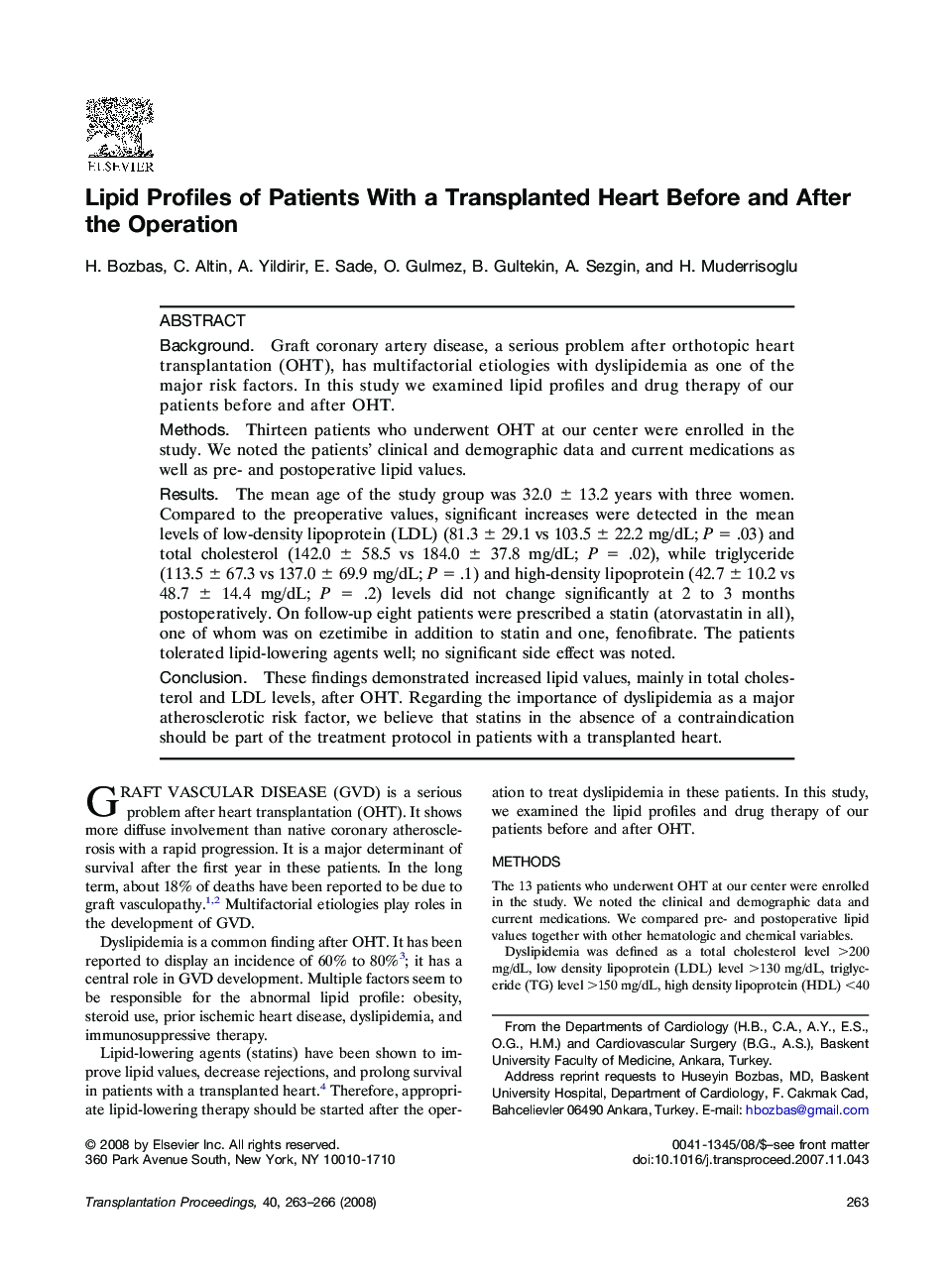| Article ID | Journal | Published Year | Pages | File Type |
|---|---|---|---|---|
| 4260482 | Transplantation Proceedings | 2008 | 4 Pages |
BackgroundGraft coronary artery disease, a serious problem after orthotopic heart transplantation (OHT), has multifactorial etiologies with dyslipidemia as one of the major risk factors. In this study we examined lipid profiles and drug therapy of our patients before and after OHT.MethodsThirteen patients who underwent OHT at our center were enrolled in the study. We noted the patients’ clinical and demographic data and current medications as well as pre- and postoperative lipid values.ResultsThe mean age of the study group was 32.0 ± 13.2 years with three women. Compared to the preoperative values, significant increases were detected in the mean levels of low-density lipoprotein (LDL) (81.3 ± 29.1 vs 103.5 ± 22.2 mg/dL; P = .03) and total cholesterol (142.0 ± 58.5 vs 184.0 ± 37.8 mg/dL; P = .02), while triglyceride (113.5 ± 67.3 vs 137.0 ± 69.9 mg/dL; P = .1) and high-density lipoprotein (42.7 ± 10.2 vs 48.7 ± 14.4 mg/dL; P = .2) levels did not change significantly at 2 to 3 months postoperatively. On follow-up eight patients were prescribed a statin (atorvastatin in all), one of whom was on ezetimibe in addition to statin and one, fenofibrate. The patients tolerated lipid-lowering agents well; no significant side effect was noted.ConclusionThese findings demonstrated increased lipid values, mainly in total cholesterol and LDL levels, after OHT. Regarding the importance of dyslipidemia as a major atherosclerotic risk factor, we believe that statins in the absence of a contraindication should be part of the treatment protocol in patients with a transplanted heart.
